Table of Contents
Toad lovers the world over lament the lack of quality information about keeping the animals as pets. For instance, if you ever wanted to know how to tell if a toad is dying, you would be hard-pressed to find an ample supply of online information from verifiable sources. There just isn’t a lot out there when it comes to toads. There is not much information on exotic pets in general.
The good news is that you can find some information if you dig deeply enough. Indeed, a lot of digging went into writing this post. If you have been looking for information on the symptoms a dying toad might exhibit, you’ve come to the right place. Below are seven troubling signs that a pet toad might be nearing death.
1. Persistent Lack of Appetite
Toads are voracious eaters when they are young. As carnivores, they will eat just about any insects you put in their enclosures. Toads will even eat other small amphibians in the wild. As they get older though, their appetites diminish. Where you might feed a young toad every day, an adult may only need to eat every few days.
in the wild. As they get older though, their appetites diminish. Where you might feed a young toad every day, an adult may only need to eat every few days.
A pet toad persistently showing a lack of appetite could be dying. This can vary by species and individual animal, so it is not possible to put a hard and fast number on how frequently an adult toad should feed. But if you have an animal that consistently eats every three days, going 5 to 7 days without feeding is a concern.
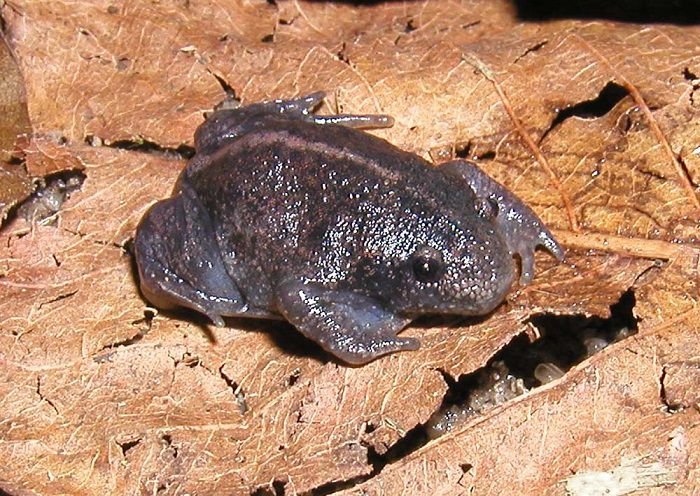
Mexican Burrowing Toad 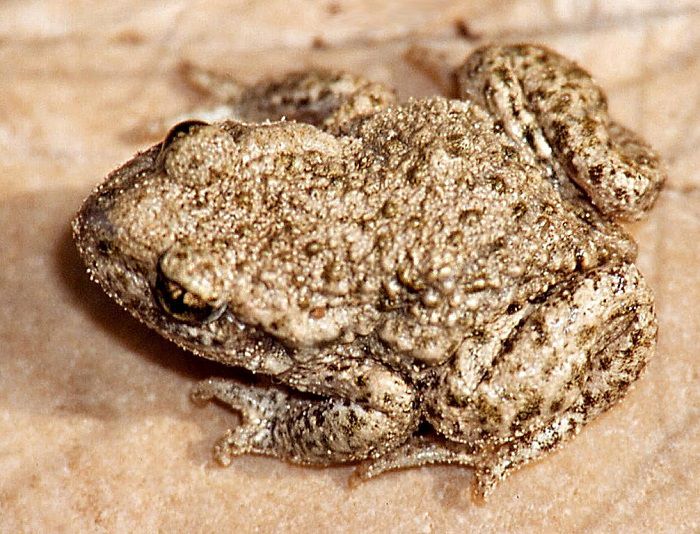
Common Midwife Toad 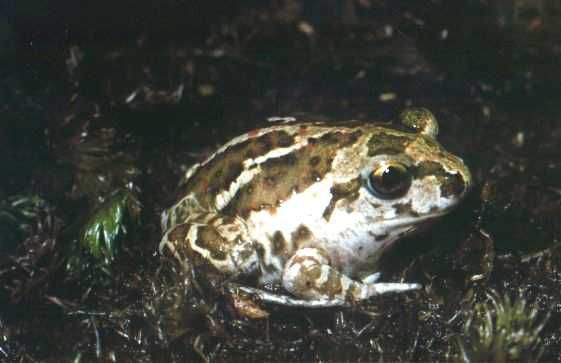
Common Spadefoot Toad
2. Noticeable Weight Loss
A toad that goes 5 to 7 days without feeding is likely to lose weight. If this pattern continues over several weeks, the animal may eventually look like a walking skeleton. This is another dangerous sign. Noticeable weight loss combined with a loss of appetite could suggest a toad only has days to live .
.
Equally concerning is an animal that loses weight despite regularly feeding. This could be a sign of some internal problem that isn’t allowing the toad’s body to absorb the nutritional value of its food. Death could be imminent.
3. Gradually Darkening Color
It is not unusual for some species of toads to change color from time to time. Some species actually change color throughout the day. Others gradually get lighter or darker with age. There is no need to be concerned unless your toad continues to get darker to the point of being almost black. Though there are exceptions to the rule, a persistently black color that lingers for days on end is a bad sign.
from time to time. Some species actually change color throughout the day. Others gradually get lighter or darker with age. There is no need to be concerned unless your toad continues to get darker to the point of being almost black. Though there are exceptions to the rule, a persistently black color that lingers for days on end is a bad sign.
4. Loss of Mobility
Toads are creatures that like to stay on the move. They have plenty of predators in the wild, so continually moving contributes to a toad’s safety. You should not see a captive toad lingering in the same spot, out in the open, for hours on end. An animal that does not move from the same spot for a day or more may be suffering from paralysis. Its lack of mobility could signal a serious health defect that could lead to death.
5. Pale and Flaky Skin
Like many other amphibians, toads shed their skin from time to time. But shedding should occur all at once. In other words, almost all of a toad’s skin will be shed at the same time. If you notice small patches of pale and flaky skin unrelated to shedding, you may have a problem on your hands.
Pale and flaky skin is often a sign of bacterial infection. Combined with some of the other signs described in this post, it could be a harbinger of imminent death.
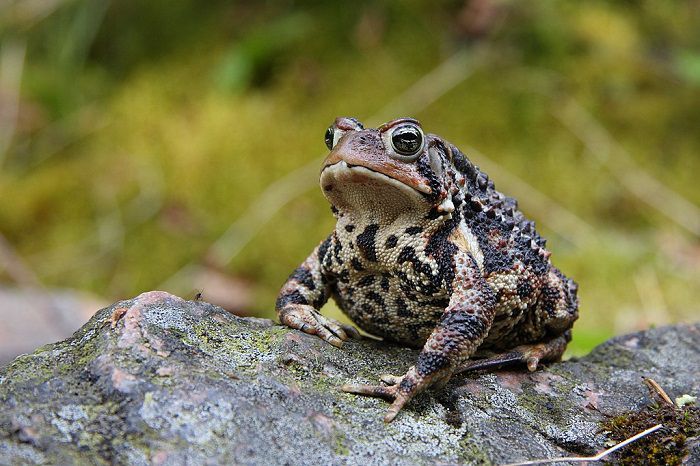
American Toad 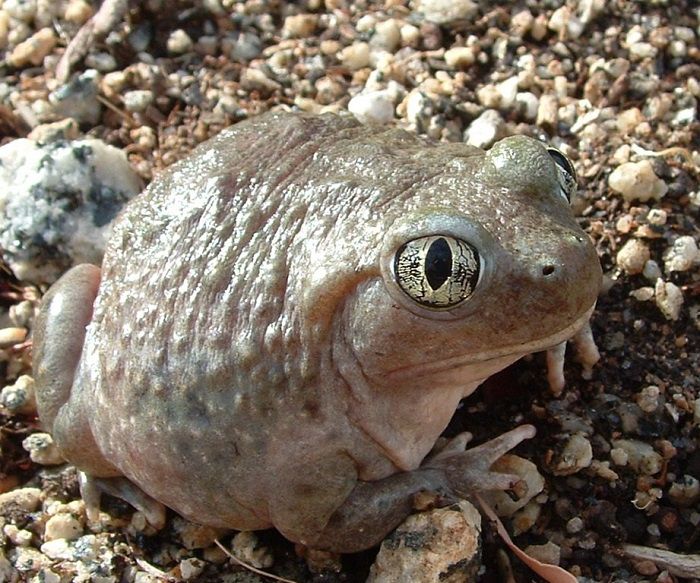
Western Spadefoot Toad 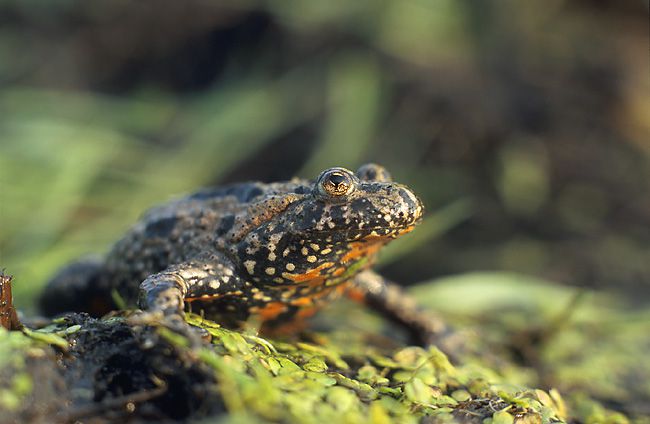
European Fire-Bellied Toad
6. Vision Problems
A number of different vision problems could indicate a toad is on its last legs. Blindness is one example. A toad that does not move and is unable to catch its prey may have lost its sight. And even when blindness is not a problem, some species of toads can develop illnesses that result in cloudy eyes.
and is unable to catch its prey may have lost its sight. And even when blindness is not a problem, some species of toads can develop illnesses that result in cloudy eyes.
Cane toads can develop a condition that causes one or both eyes to turn blue. Observing this would be an indication that the animal is ill and, quite possibly, nearing death.
7. Open Sores and Lesions
Finally, a toad’s skin should remain moist and unbroken. There is never a reason for the skin to develop open sores and lesions. If you observe this in your pet, a bacterial infection is a good possibility. A failure to resolve on its own could mean that the infection has progressed too far. The animal could die in a matter of days.
Please bear in mind that none of the signs described here is definitive in and of itself. They all suggest a toad could be dying, but they are not an indicator of imminent death. Like any other creature in nature, toads are perfectly capable of recovering from all sorts of illnesses and injuries. As a toad owner, all you can do is care for your pet to the best of your ability. Nature will take care of the rest.
Photo Credits:
Featured Image (Helmeted Water Toad): José Grau de Puerto Montt – CC BY-SA 3.0
– CC BY-SA 3.0
Common Midwife Toad: Christian Fischer – CC BY-SA 3.0
– CC BY-SA 3.0
Mexican Burrowing Toad: Pstevendactylus – CC BY-SA 3.0
European Fire-Bellied Toad: Marek Szczepanek – CC BY-SA 3.0
– CC BY-SA 3.0
Western Spadefoot Toad: Takwish – CC BY-SA 2.5
– CC BY-SA 2.5
American Toad: Cephas – CC BY-SA 3.0
– CC BY-SA 3.0
Common Spadefoot Toad: Franco Andreone – CC BY-SA 2.5
– CC BY-SA 2.5

